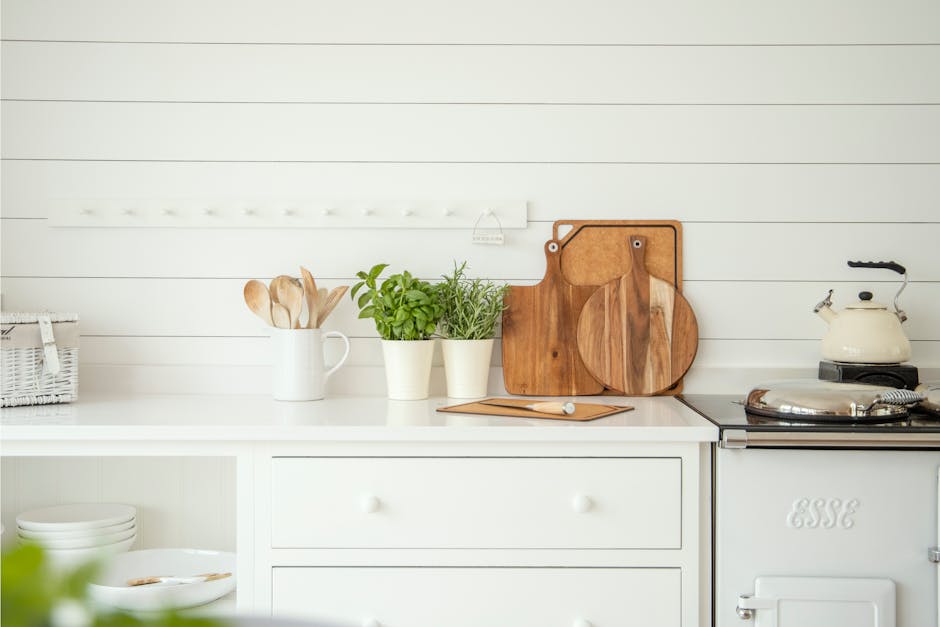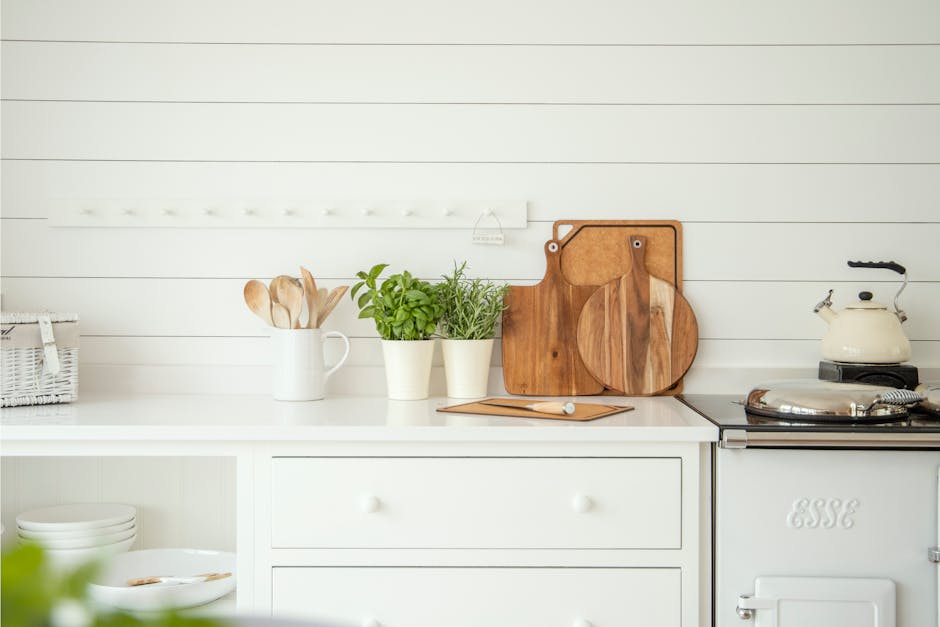Mastering the Art of Potting Basil, Thyme, and Rosemary for Your Kitchen

Potting herbs is a delightful hobby that not only adds a touch of green to your kitchen but also provides fresh, aromatic ingredients for your culinary adventures. Among the many herbs you can grow, basil, thyme, and rosemary stand out for their versatility and ease of cultivation. Mastering the art of potting these herbs can transform your kitchen into a mini herb garden, infusing your space with a refreshing, earthy aroma and offering a ready supply of fresh herbs for your dishes.
Let’s start with basil, a staple in Italian cuisine and a favorite among herb enthusiasts. Basil thrives in well-drained soil and plenty of sunlight. When potting basil, it’s crucial to choose a pot with good drainage to prevent waterlogging. A sunny windowsill is an ideal location for your basil plant, as it needs at least six hours of sunlight each day. Regular pruning is also essential to encourage bushier growth and prevent the plant from becoming leggy. Remember, basil is an annual plant, so you’ll need to replant it each year.
Moving on to thyme, a herb with a subtle, dry aroma and a slight hint of mint. Thyme is a hardy perennial that prefers well-drained soil and full sun, much like basil. However, thyme is more drought-tolerant and can handle a bit of neglect, making it a great choice for novice gardeners. When potting thyme, ensure the pot has ample drainage holes and use a well-draining soil mix. Thyme plants can become woody with age, so regular pruning is recommended to maintain a compact, bushy form.
Lastly, let’s talk about rosemary, a robust herb with a strong, pine-like fragrance. Rosemary is a perennial shrub that loves the sun and well-drained soil. It’s more drought-tolerant than basil but less so than thyme. When potting rosemary, choose a larger pot as this plant can grow quite large over time. Like basil and thyme, rosemary benefits from regular pruning to encourage bushier growth and prevent woodiness.
Now, you might be wondering about the best time to water these herbs. A good rule of thumb is to water when the top inch of soil feels dry to the touch. Overwatering is a common mistake in herb gardening, and it can lead to root rot, a condition that can kill your plants. So, it’s better to err on the side of underwatering.
In terms of feeding, these herbs are not heavy feeders. A slow-release organic fertilizer applied in the spring should suffice for the growing season. However, if your plants seem to be struggling, a liquid seaweed feed can give them a much-needed boost.
In conclusion, potting herbs like basil, thyme, and rosemary can be a rewarding endeavor. Not only do these herbs add a vibrant touch to your kitchen, but they also provide fresh, flavorful ingredients for your meals. With the right care and attention, you can enjoy a bountiful harvest from your kitchen herb garden. So, why not give it a try? You might just discover a new passion for herb gardening.
The Ultimate Guide to Growing and Caring for Kitchen Herbs: Basil, Thyme, and Rosemary
Potting herbs is a delightful hobby that not only adds a touch of green to your kitchen but also provides fresh, aromatic ingredients for your culinary adventures. Among the most popular kitchen herbs are basil, thyme, and rosemary. These herbs are not only easy to grow but also have a myriad of uses in various dishes.
Starting with basil, this herb is a favorite in Italian cuisine and is a key ingredient in pesto. Basil thrives in warm, sunny conditions and prefers well-drained soil. To grow basil, you can start from seeds or buy a small plant from a nursery. If you’re starting from seeds, sow them in a pot filled with good quality potting soil and place the pot in a sunny spot. Water the seeds regularly, but avoid overwatering as this can cause the seeds to rot. Once the seedlings have developed two sets of true leaves, you can thin them out to give each plant enough space to grow.
Transitioning to thyme, this herb is a staple in French cuisine and is often used in soups, stews, and roasts. Thyme is a hardy plant that can tolerate dry, rocky soil and full sun. To grow thyme, you can start from seeds, cuttings, or division. If you’re starting from seeds, sow them in a shallow tray filled with a mix of sand and compost. Cover the seeds lightly with sand and keep the tray in a warm, sunny spot. Water the seeds sparingly as thyme prefers dry conditions. Once the seedlings are large enough to handle, you can transplant them into individual pots.
Finally, let’s talk about rosemary. This herb is a favorite in Mediterranean cuisine and is often used in roasts, stews, and sauces. Rosemary is a woody perennial that prefers well-drained soil and full sun. To grow rosemary, you can start from seeds, cuttings, or buy a small plant from a nursery. If you’re starting from seeds, sow them in a pot filled with a mix of sand and compost. Cover the seeds lightly with sand and keep the pot in a warm, sunny spot. Water the seeds sparingly as rosemary prefers dry conditions. Once the seedlings are large enough to handle, you can transplant them into individual pots.
Caring for these herbs is relatively straightforward. Regular watering is essential, but avoid overwatering as this can cause the roots to rot. It’s also important to provide these herbs with plenty of sunlight. If you’re growing these herbs indoors, place them near a south-facing window where they can get at least six hours of sunlight each day. Regular pruning is also beneficial as it encourages bushier growth and prevents the plants from becoming leggy.
In conclusion, growing basil, thyme, and rosemary in your kitchen is a rewarding endeavor that not only enhances your cooking but also adds a touch of nature to your home. With the right care and attention, these herbs can thrive and provide you with fresh, aromatic ingredients for your culinary creations. So why not give it a try? You might just discover a new passion for gardening and cooking with fresh herbs.

